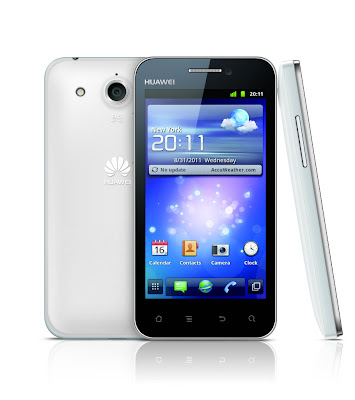We now have the Windows smartphones with support from carriers. Smart Communications has the circa 2010 HTC 7 Mozart and Nokia Lumia 710. Globe Telecom has the most desirable Windows phone device, with the Nokia Lumia 800.
All three Windows Phones have a 3.7-inch 480 x 800 displays, with the main distinctions being internal storage and the camera. The Nokia Lumia 800 with it 8 MP camera with the Carl Zeiss lens and 16 GB of internal storage is the best phone among the three.
HTC 7 Mozart. Despite being the oldest there is nothing really wrong with the HTC 7 Mozart, but being offered free at Smart's Data Plan 3000 and All-in Plan 2500, it has to compete with much better hardware. At Unlimited Data Plan 3000 the Apple iPhone 4 32 GB looks like a much better choice, and at All-in Plan 2500 the HTC Sensation XE also is much more compelling than the HTC 7 Mozart.
The HTC 7 Mozart is no longer available from HTC dealers, but on the grey market you can find it for
Php12,350 from Widget City. While this comes with a service warranty rather than an HTC parts and service warranty, it is priced low enough to recommend even without an official warranty.
The problem is that we do not recommend Globe Unli Surf Combo Plan 2499. Instead we feel that Globe Unli Surf Combo is the sweet spot on Globe Data Plans. Rather than Pay 2499 a month a get a free phone, I would rather get Unli Surf Plan 1799 and add one of the Globe unlimited text, call or text and call boosters. This would give you a monthly service fee of Php2,148 to Php2,398 a month and pay a small cash out for the phone. This would give a better value for money proposition Globe Unli Surf Combo Plan 2499 in order opinion.
The problem is if you agree with this proposition, the iPhone 4S look like a better deal at Php4,800 rather than a Nokia Lumia 800 at Php7,200. The iPhone 4S does have better specifications and more apps available. At My Super Plan, the Nokia Lumia 800 is much cheaper than an iPhone, but without a substantial (300-500 MB a month or so volume data plan) a smartphone really is not all that smart. Basically, without a unlimited or volume data plan you will turn most the phones features off and turn them on manually like you would do with a laptop when you want to check something. So when we look at the Globe Nokia Lumia 800, we look at it with how good an option it is a Globe 999 plans.
First lets look at the Globe Nokia Lumia 800 on a Unli Surf Combo Plan 999. At this plan you pay Php500 a month for the phone for two years, bringing up you monthly bill to Php1,499. That gets you unlimited data but you pay for all your calls and SMS. Make 2-3 minutes of calls per day and send out 10 SMS messages and you are now up to about Php2,200 a month which makes our Plan 199 + Booster option a better deal.
Second lets look at the Globe Nokia Lumia 800 on a My Super Plan Plan 999. At this plan you pay Php500 a month for the phone for two years, bringing up you monthly bill to Php1,499. If I add 300 MB of data a month, and your bill goes up to Php1799. 300 MB of data is enough to keep your phone running 24/7 on 3G with data efficient apps and if you do not do any web browsing and uploading of pictures. Adding 1 GB of data will be enough. Even on our unlimited data plans on two phones which are connected 24/7 to 3G an getting email, with instant messengers enabled and getting social networking updates, we really never go back over 1 GB a month. If you plan to use your mobile phone as a modem for a personal computer, 1 GB wont be enough though. In any event bring up the bill to Php1,998 a month.
Nokia Lumia 710. Smart is offering the Nokia Lumia 710 is being offered at Php450 a month for two years on its Special Edition Data Plan 1000. This is a pretty good plan:
- 500 minutes calls to Smart and TNT number.
- 500 SMS to all networks.
- 1 GB of data.
Your month bill will be Php1,450 a month and if you are willing to keep you calls within Smart network, use SMS to communicate with Globe and Sun subscribers, you should be able to keep your bill to Php1,450 a month.
The Winner? After considering plans, we thing the best deal on a new Windows Phone 7 device is the Nokia Lumia 710 from Smart.
As nice as the Nokia Lumia 800 is, once we start looking at Plans which cost Php2,000 a month the Apple iPhone 4S, Samsung Galaxy Nexus and Samsung Galaxy Note are what we recommend instead.
April 18, 2012 update: Given the the Nokia Lumia 800 is now available from Globe Telecom at Plan 1799 that with unlimited data and 800 minutes consumable, we would think that it is an equally good choice as the Nokia Lumia 710 from Smart Communications.































